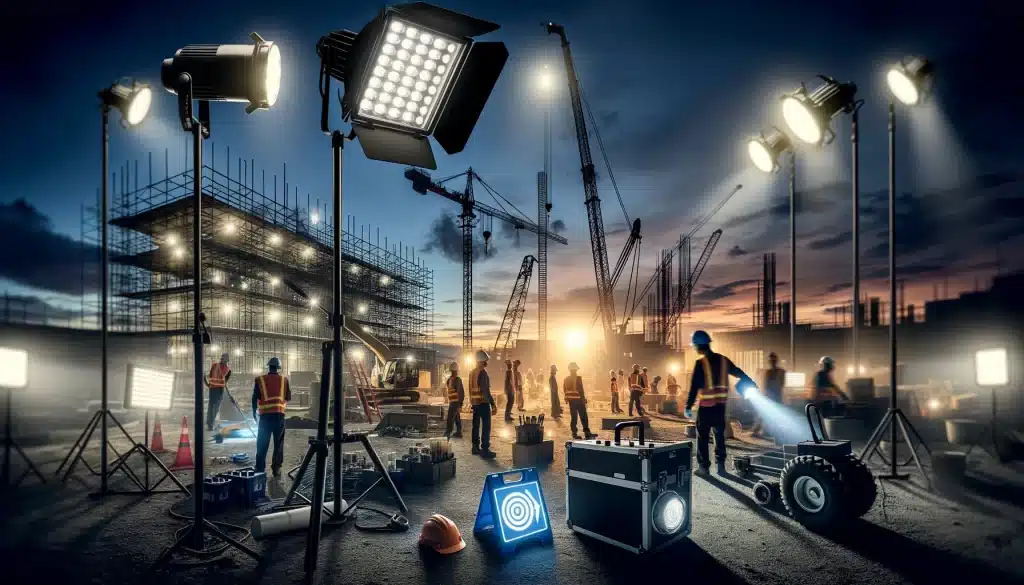
Welcome to Tally Ho Lighting
Welcome to Tally Ho Lighting
As technology continues to advance at an unprecedented rate, it’s no surprise that lighting innovations have also made significant strides. In the workplace, lighting plays a crucial role in creating an environment that fosters productivity, creativity, and overall well-being. Gone are the days of dimly lit offices with flickering fluorescent lights. Today, we have access to cutting-edge lighting solutions that not only enhance the aesthetics of the workspace but also have a profound impact on employee productivity and energy efficiency.
Before we dive into the latest lighting innovations, it’s essential to understand why proper lighting is crucial in the workplace. Numerous studies have shown that lighting has a direct influence on employee performance, mood, and overall well-being. Insufficient or poor-quality lighting can lead to eye strain, headaches, and a decrease in productivity. On the other hand, well-designed lighting systems can create a comfortable and stimulating environment that promotes focus, creativity, and a positive work atmosphere.
One of the most significant advancements in lighting technology is the widespread adoption of Light Emitting Diode (LED) lighting. LED lights have quickly become the go-to choice for offices worldwide due to their exceptional energy efficiency, longevity, and versatility.
LED lights consume significantly less energy compared to traditional incandescent or fluorescent bulbs, resulting in substantial cost savings for businesses. Moreover, LED lights have a much longer lifespan, requiring less frequent replacements and reducing maintenance expenses. These energy-efficient and long-lasting qualities make LED lights an ideal choice for workplaces that aim to reduce their environmental footprint and operating costs.
Our bodies are naturally attuned to the changes in natural light throughout the day. This connection between light and our internal body clock, known as the circadian rhythm, influences our sleep-wake cycles, alertness, and overall well-being. Traditional office lighting often fails to mimic this natural rhythm, leading to disrupted circadian rhythms and diminished productivity.
Enter dynamic lighting systems, which aim to replicate the natural progression of daylight within the office environment. By adjusting the intensity and color temperature of the light throughout the day, dynamic lighting helps align employees’ internal body clocks with their work schedules. This synchronization can lead to improved sleep quality, increased alertness, and enhanced cognitive performance, ultimately boosting productivity and overall well-being in the workplace.
In addition to mimicking the natural progression of daylight, human-centric lighting takes into account the specific needs and preferences of individuals. This approach recognizes that different tasks require different lighting conditions and that individual preferences for brightness and color temperature can vary.
Human-centric lighting systems allow for personalization, empowering employees to adjust the lighting in their immediate workspace according to their specific needs. This flexibility not only enhances comfort but also promotes a sense of control over the work environment, leading to increased job satisfaction and productivity.
Advancements in Internet of Things (IoT) technology have paved the way for smart lighting systems that offer unparalleled control, automation, and integration capabilities. Smart lighting combines the benefits of energy efficiency, dynamic lighting, and human-centric lighting with the convenience of automation and connectivity.
With smart lighting, offices can optimize energy usage by automatically adjusting lighting levels based on occupancy and natural light availability. Integration with other IoT devices allows for seamless control and synchronization, such as automatically dimming lights when a presentation starts or adjusting lighting based on ambient noise levels.
Research has consistently shown the positive impact of nature on our well-being and productivity. Biophilic lighting aims to bring elements of nature into the workspace, creating a more harmonious and calming environment. This approach often incorporates natural materials, colors, and dynamic lighting that imitates natural daylight patterns.
Biophilic lighting not only enhances aesthetics but also reduces stress, improves focus, and stimulates creativity. By incorporating elements such as natural light simulations, circadian rhythm synchronization, and even virtual skylights, offices can create a workspace that fosters well-being and boosts productivity.
In the ever-evolving world of office lighting, staying up-to-date with the latest innovations is crucial for businesses aiming to create a productive and energy-efficient workspace. LED lighting, dynamic lighting, human-centric lighting, smart lighting, and biophilic lighting are just a few of the cutting-edge solutions available today. By embracing these innovations, businesses can revolutionize their workspaces, enhance employee productivity, and contribute to a more sustainable future.
Remember, lighting is not just a functional aspect of the workplace; it has the power to transform the way we work, think, and feel. As you embark on your journey to improve your workspace, consider the possibilities that these lighting innovations offer. Let there be light, and let it be a catalyst for a brighter and more productive future in your office.
Share to :

Lighting the way to a brighter tomorrow, one space at a time
Copyright © All Right Reserved